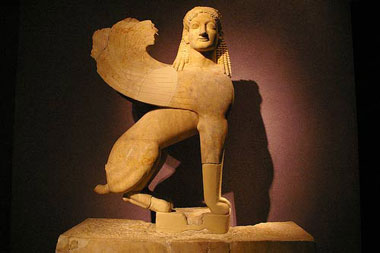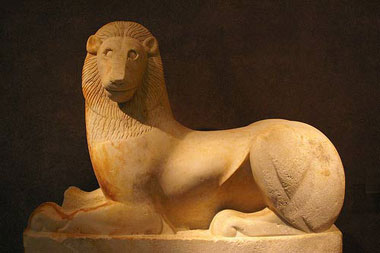Kerameikos - Ancient Athens Cemetery
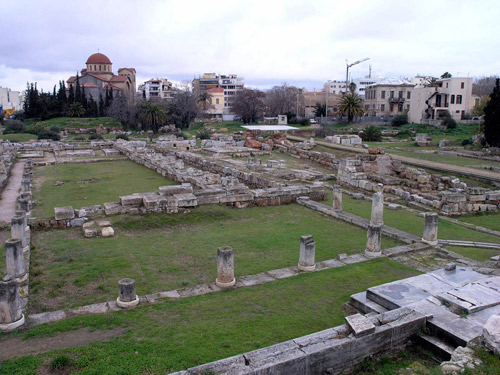
Kerameikos was the official cemetery of ancient Athens from the 11thc BC till the 2ndc AC. The location was named Kerameikos because of the existence of ceramic workshops on the premises.
Ceramic Gates-The Sacred Gate-Dipylon: the formal entrances of the city in this location were named Keramikes. These gates divided the area in two parts, the one inside Kerameikos and the one outside, where the graves were located. Iera Pyli, the Sacred Gate, was the beginning of Iera Odos, the Sacred Road leading to the altar of Goddess Demeter in Elefsina. Dipylon was the beginning of the parade heading towards the Acropolis during the celebration of Panathenaea.
Dipylon was the biggest gate of the ancient world. Its huge size served for strategic, defensive and religious purposes. Dipylon was also the beginning of Kerameikos' street which looked like a square. Ceremonies, like sacrifices and gatherings, were taking place here in honor of the dead who were buried nearby.
Kerameikos street: right outside Dipylos passed Kerameikos street or "the street towards the academy" as it was called because it led to the Academy were Plato created his school. It had a width of 39 meters and a length of 1,5 km. To the left and right sides of the street were tombs of well-known Athenians. Moving on towards the left one would notice the greatest of all monuments, "Dimosio Sima" or "Polyandreion". The ashes of the Athenians who had died in battles were buried there with public expenses. Here is the place where Pericles made his speech dedicated to the first people to die during the Peloponnesian War.
Inside the walls of Kerameikos was Pompeyon, a building used for the preparation of processions. Its entrance was characterized by an impressive propylon and a wide square. This was the place where, every four years, the procession for the celebration of Panathenaea was shaped.
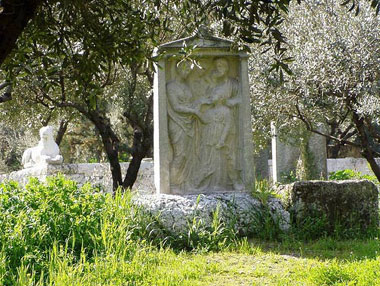
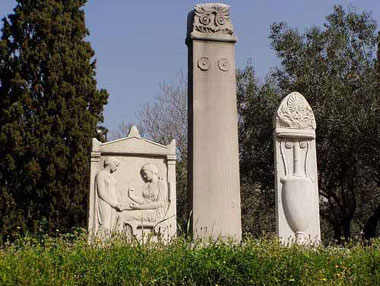
Kerameikos Museum: it includes a wide variety of funerary pots from the 11th century BC till the 2nd century AC. Some of the exhibits are: a metal sword, the most ancient in Greece 1025 BC), vases with roosters, lotus fruits, urns, a lead box and statuette with curses written on them, (about 400 BC), archaic marble tomb stones with moving messages on them, the tomb stone of Dexileo (394-393 BC). In addition, the Kouros statue of the Sacred Gate was recently discovered. It is said that it has been created by the great sculptor of Dipylon (600 BC).
